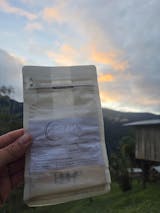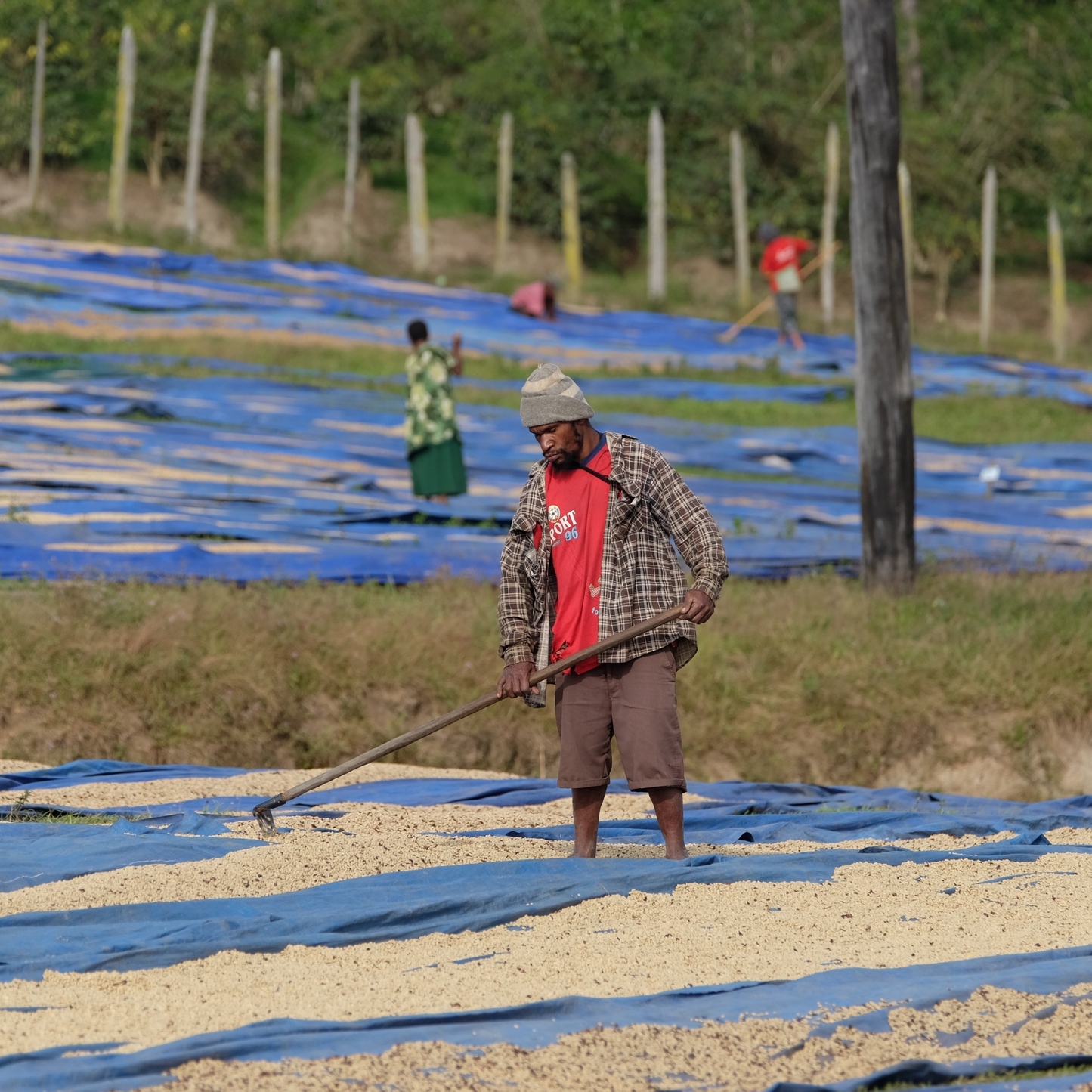
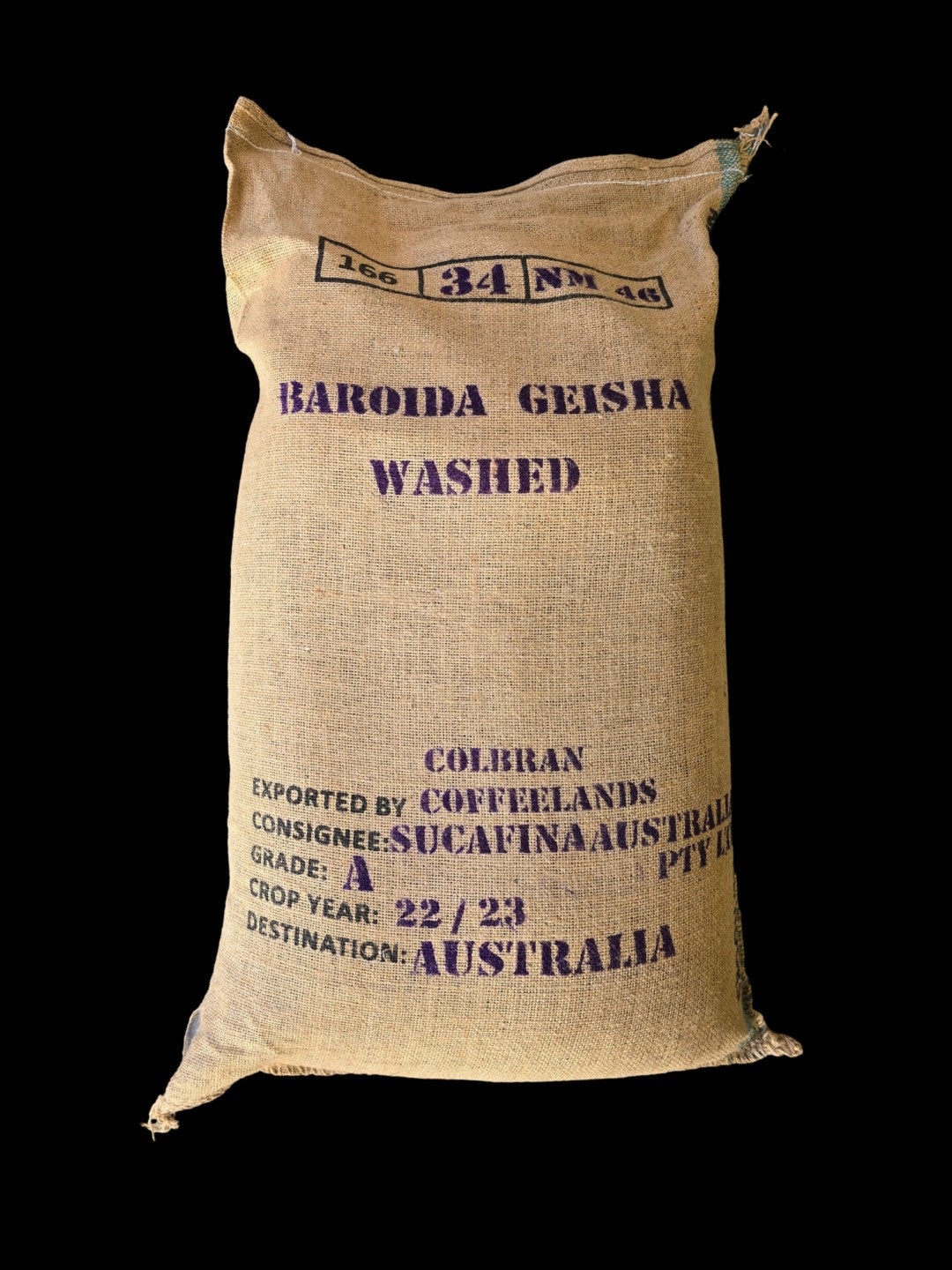
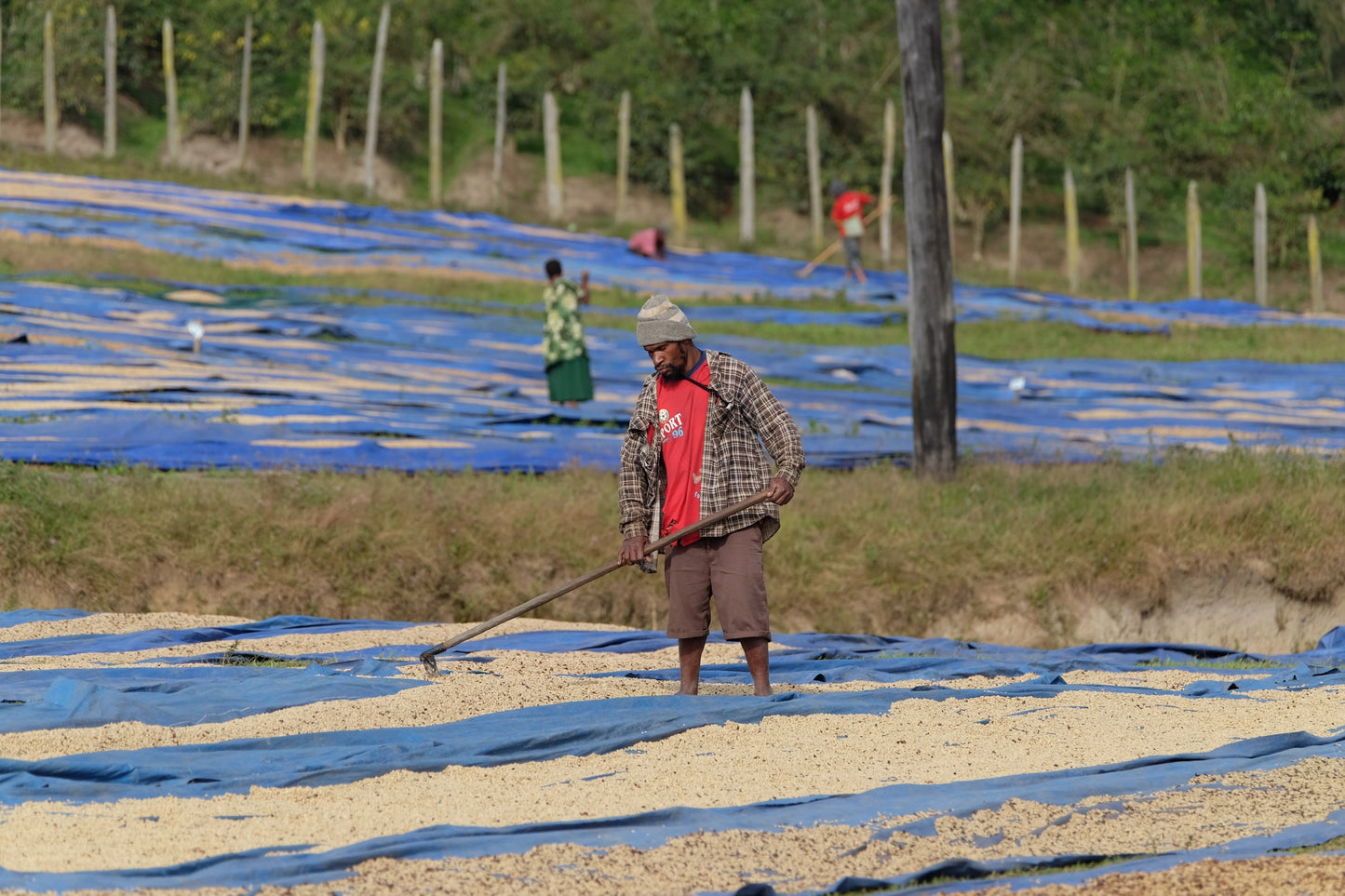
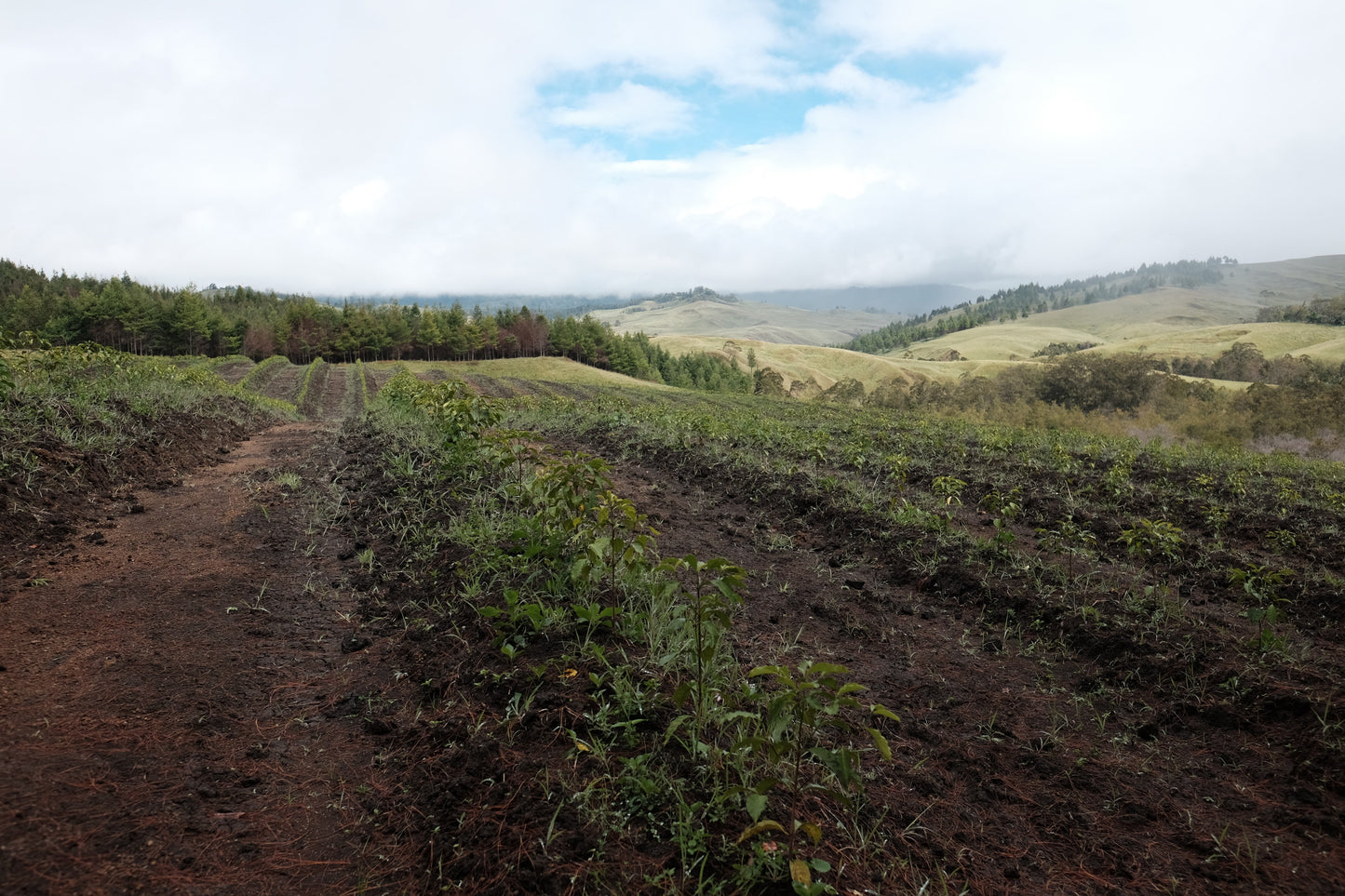
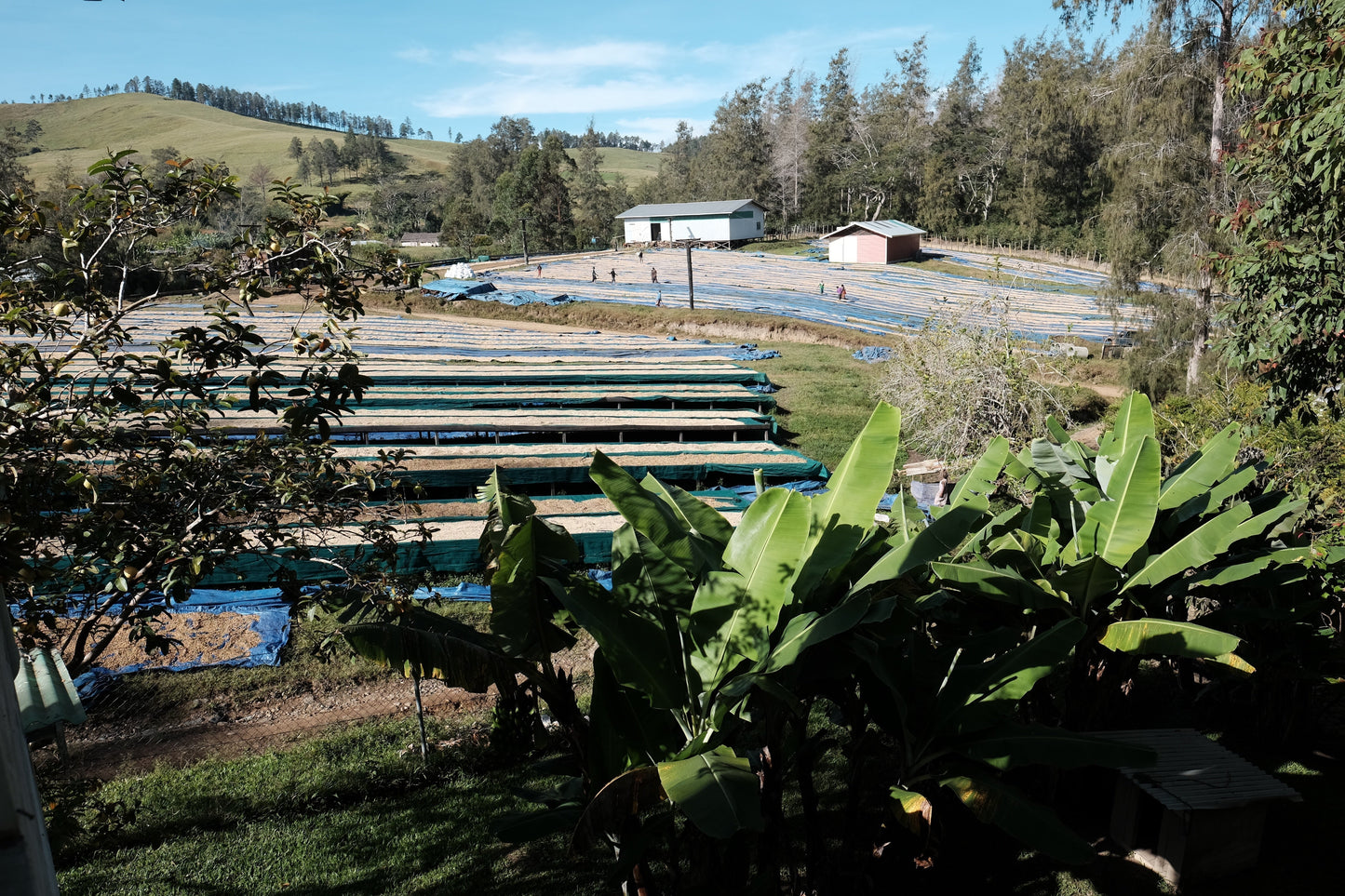
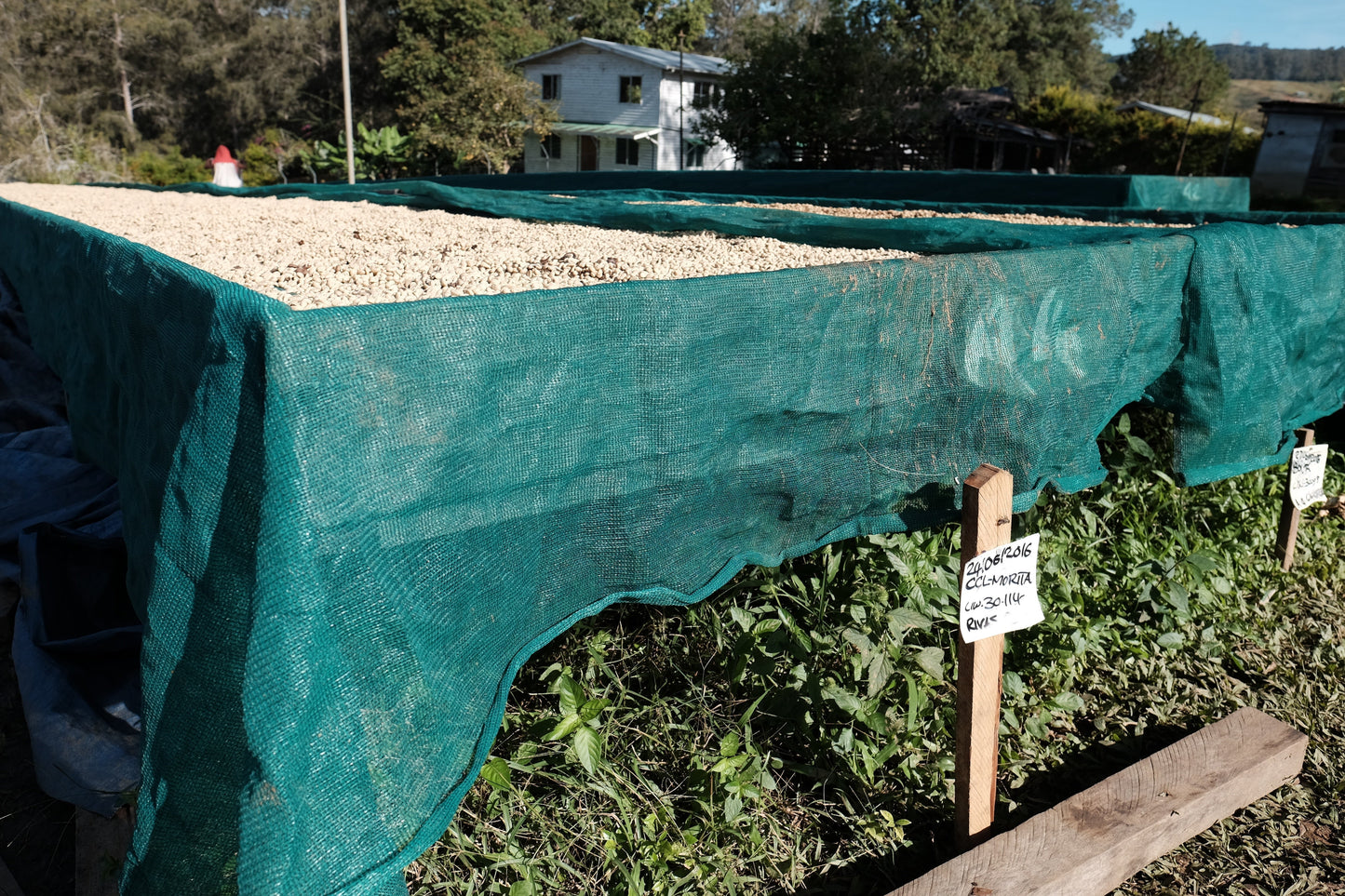
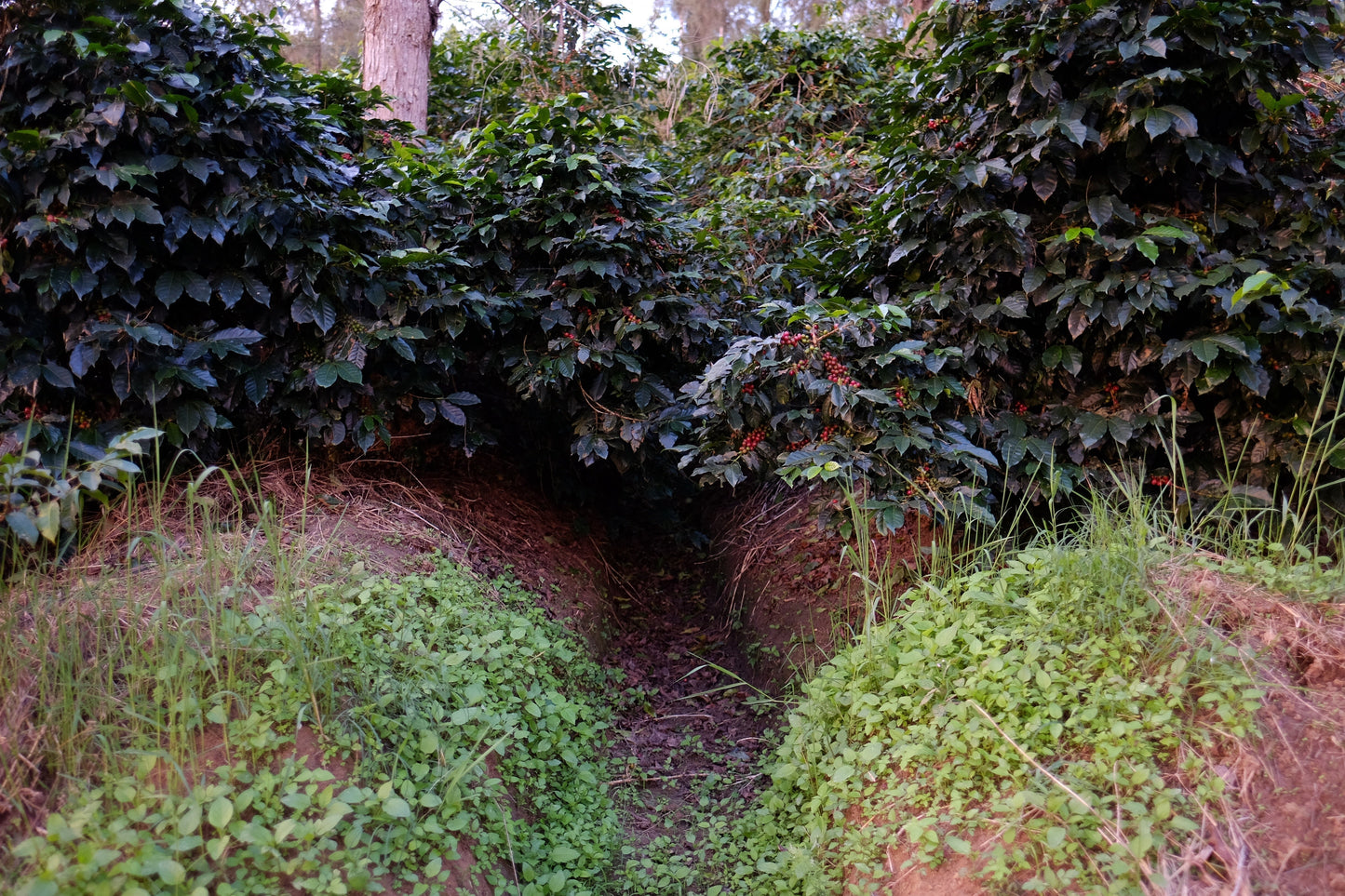
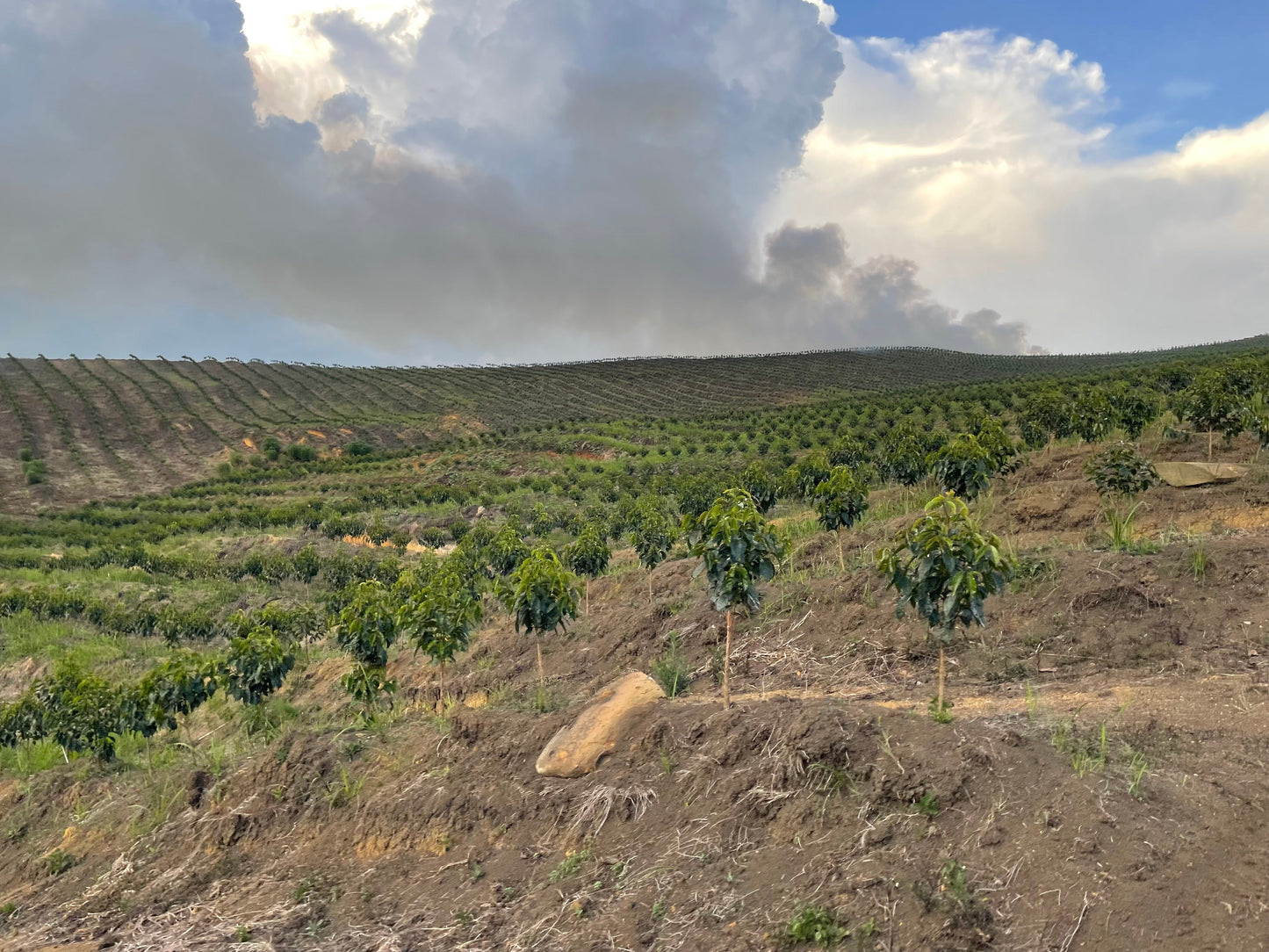
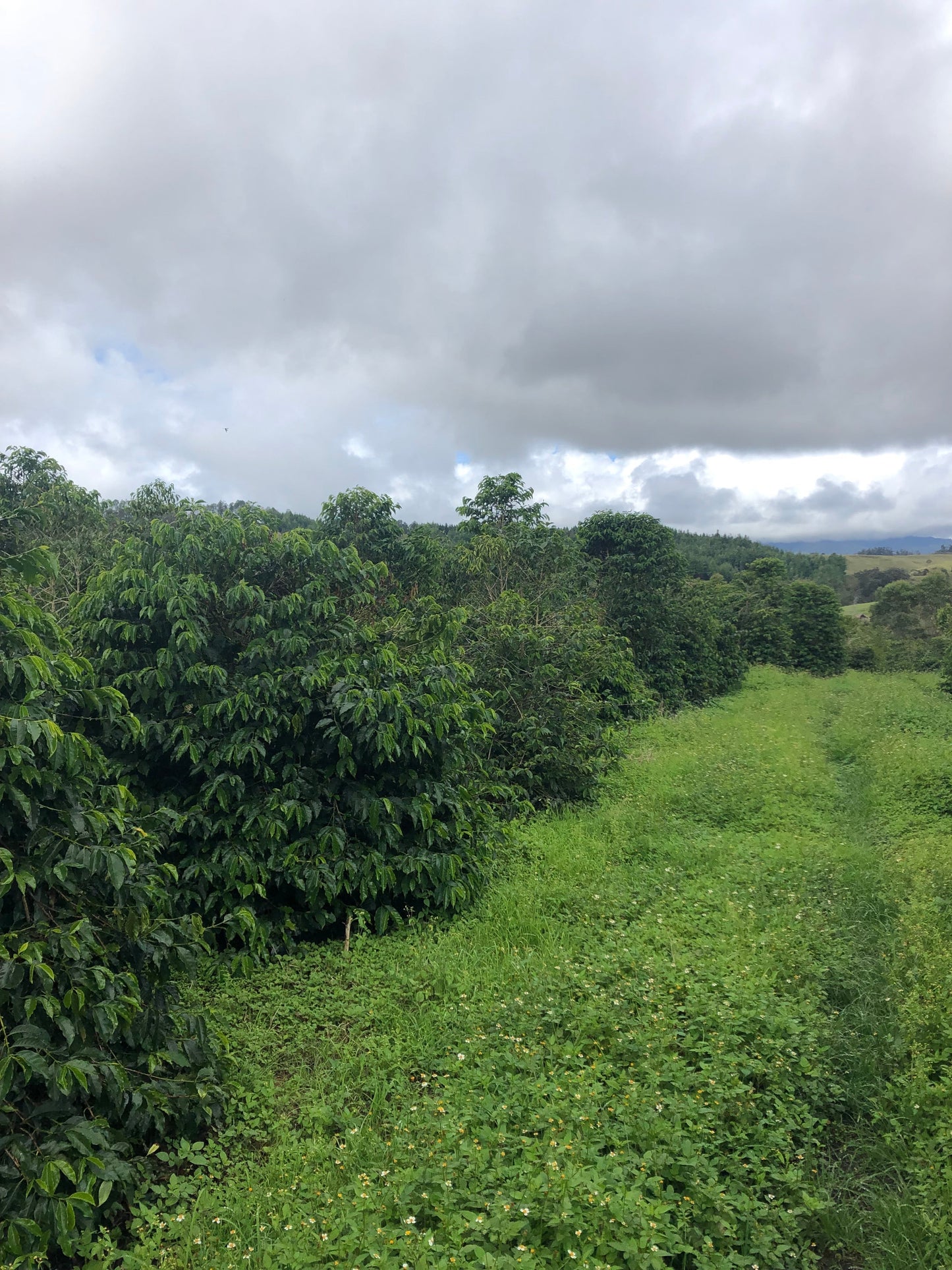
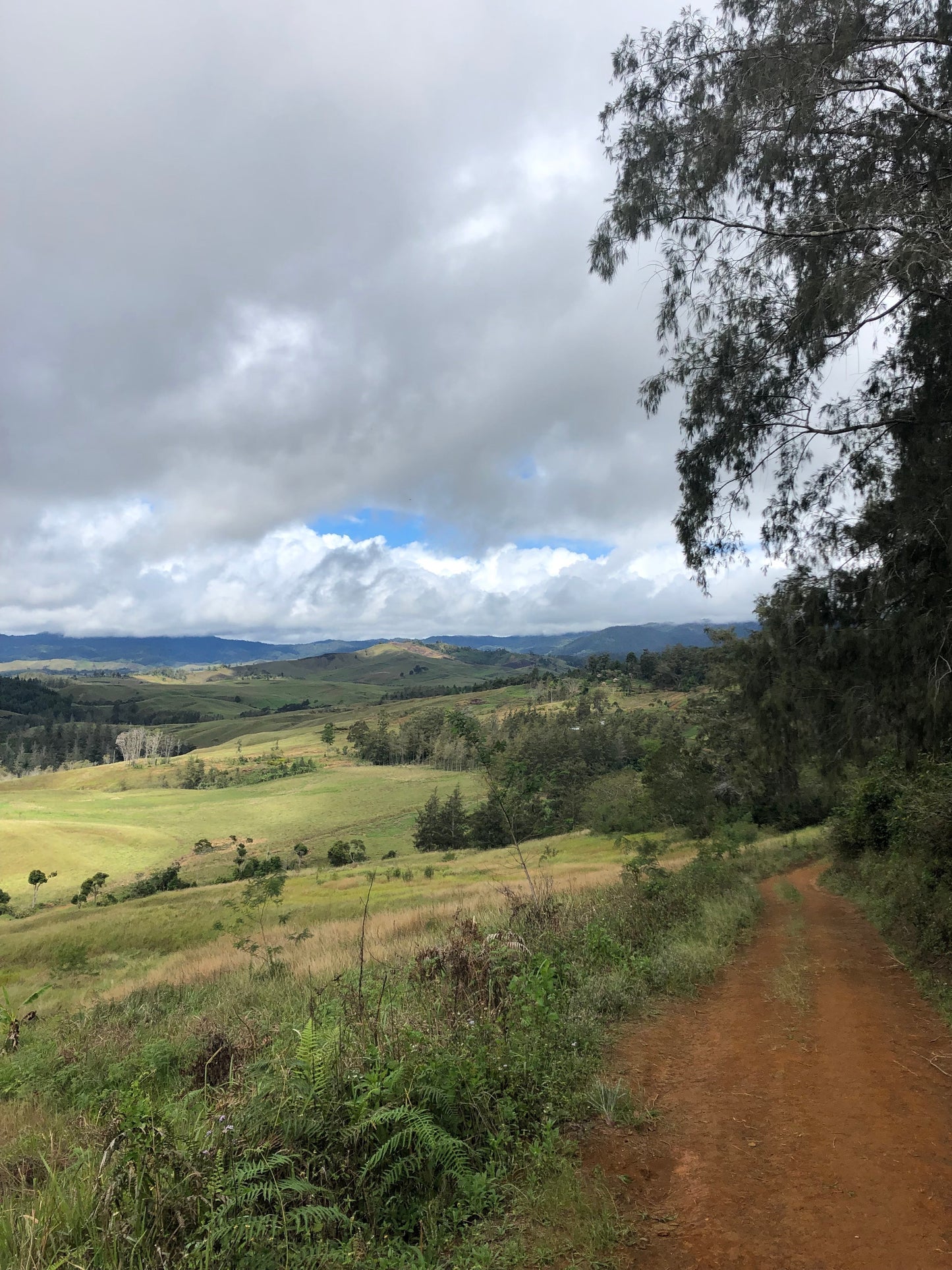

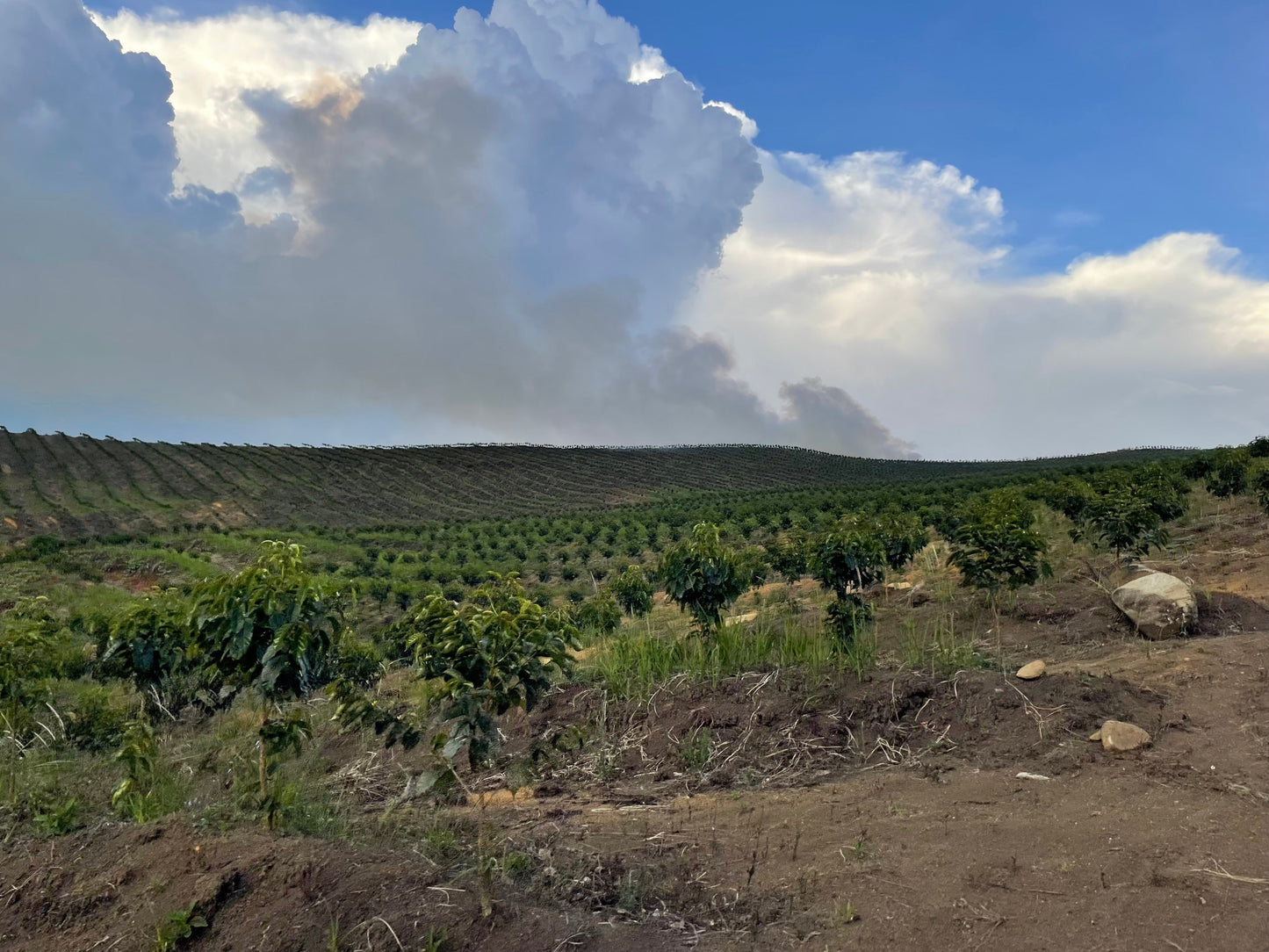
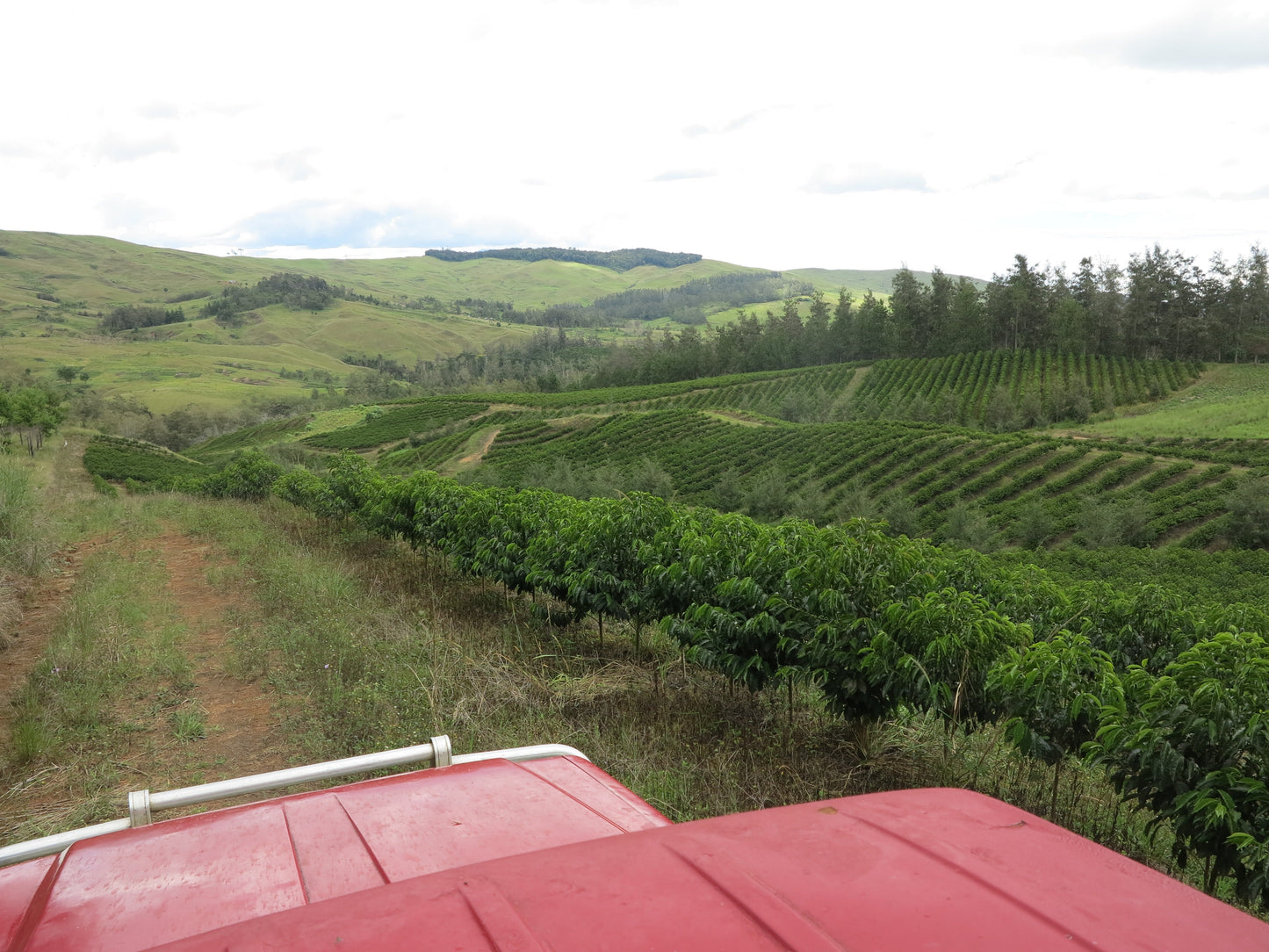
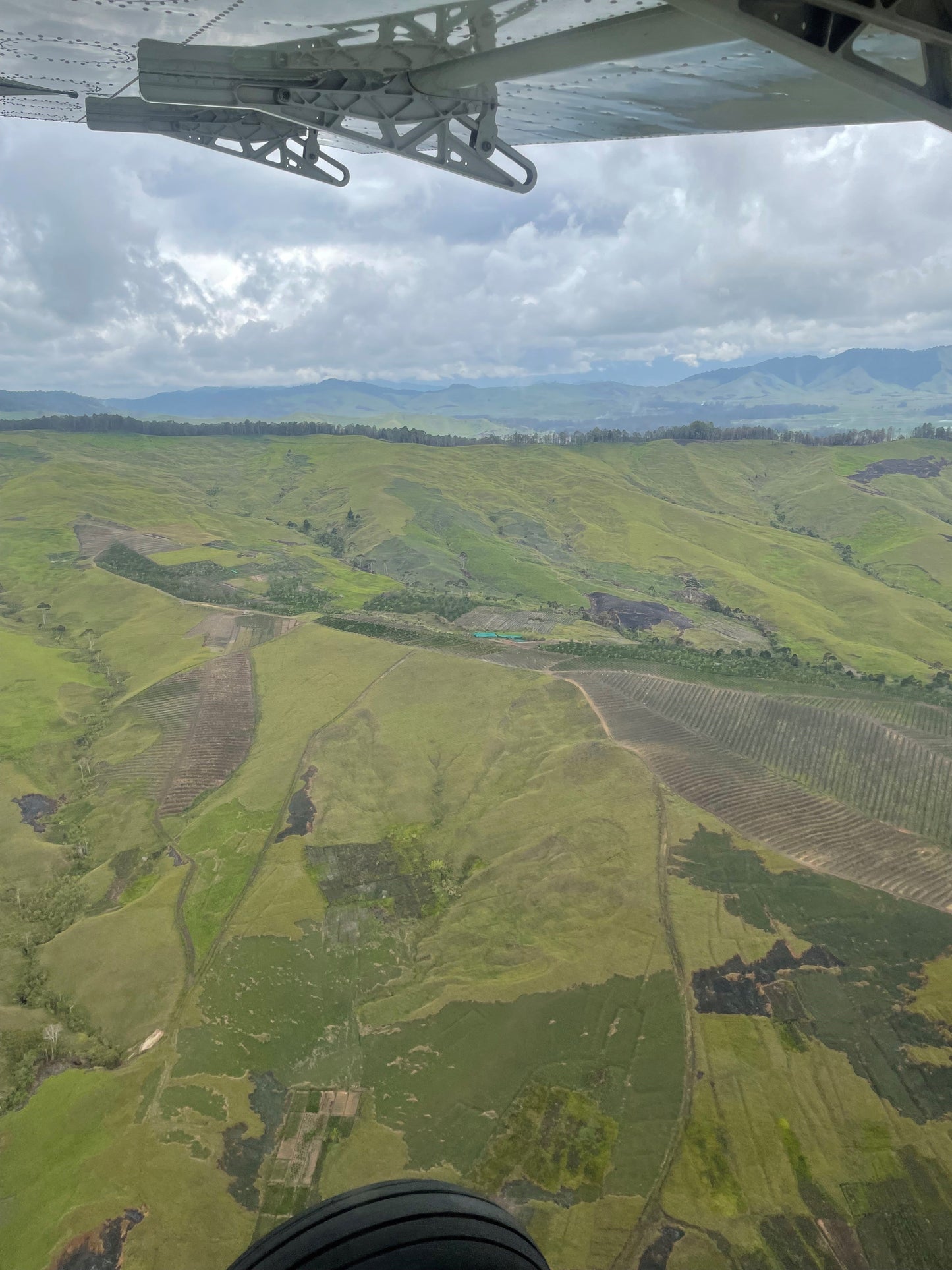
This coffee’s roasted in our espresso style — but that doesn’t mean you need to brew it as espresso. You can make it however you like — espresso, filter, moka pot, AeroPress or whatever you enjoy. We roast it a touch darker than we would a filter roast to caramelise the sugars and bring out smooth chocolatey and nutty flavours that cut beautifully through milk.
When you add milk the natural sweetness, fat and proteins tend to soften acidity and highlight caramelised flavours. That’s why lighter filter roasts can sometimes taste a bit sharp or sour with milk — they’re simply not built for it. Espresso roasts being more developed balance this out. The deeper caramelisation creates toffee and cocoa notes that blend harmoniously with milk’s creaminess while a hint of gentle bitterness adds that satisfying ‘coffee punch’ in your flat white or cappuccino.
If you prefer your coffee black this roast will still give you a full-bodied rich cup with plenty of depth and sweetness. For a lighter fruitier experience you might enjoy exploring our filter range instead.
Origin and Sourcing
?
?
?
Roast Details
?
?
?
?
?
?
?
Taste Profile
?
?
Papua New Guinea | Baroida Estate | Geisha Washed #7904 - When is peak freshness?
Light Roast - Roasted on Roest L100 Plus
This single-variety Geisha lot from Baroida Estate blends the classic PNG washed profile of black tea and Mandarin orange with the complex florals and stone fruit of high-altitude Geisha.
This single-variety Geisha lot is from Baroida Estate. Located in the Kainantu District, Eastern Highlands Province, the estate was founded by Ben Colbran in the 1960’s when the Government encouraged foreign agriculturalists to begin cultivating land throughout the highlands. Ben first purchased the land from a native man named Taro and was among the first farmer to cultivate coffee in these valleys. Today, Ben’s son Nichol runs the plantation.
As part of his never-ending efforts to expand and improve quality at Baroida Estate, Nichol planted 22,200 Geisha variety coffee plants in 2017. The first lot of Fully washed Geisha was produced in 2021. Given the excellent cup profile, Nichol has already moved forward with expanding his Geisha production. He is growing additional 800 Geisha seedlings in the nursery and 6,000 in the seedbeds.
The name ‘Baroida’ comes from the Baroida spirit, believed by locals to reside in a large river rock sitting in one of the main rivers flowing through the estate. This particular rock has stubbornly remained in the middle of the river for as long as anybody can remember, refusing to budge through the most severe floods and even when other rocks have been washed away.
The Baroida plantation sits at the apex of the Lamari river valley and Mount Jabarra range. The plantation itself sits at about 1,700 to 1,850 meters above sea level amongst thousands of hectares of cleared land with former colonial coffee estates surrounding them (now run by native landowners) and flanked by mountains filled with smallholder coffee producers who cultivate close to a million trees.
Cultivation
One of the biggest challenges that the Colbrans faced when they first started out was the issue of soil water- logging. The system widely used for planting coffee seedlings in Papua New Guinea was adapted from Kenya. When planting a new seedling, you dig a hole approximately one meter wide by one meter deep, fill it with top soil and then plant the seedling in it.
This method was completely unsuitable for the wet highlands of PNG, where the average annual rainfall is 90 inches (as opposed to Kenya’s <60 inches). This issue was solved by digging drainage ditches in between each row of coffee. After a short time Ben became very good at ‘reading’ the coffee to see what it needed (i.e. certain fertilizers or whether the coffee was diseased). This knowledge grew over time with experience and these solutions were passed on to Nichol, who still implements them today.
Some minor adjustments have been made over the years as Colbran Coffeelands has grown in size and output. More shade trees have been planted in order to reduce requirements for fertilizer as well as keep weeds under control. Of course, with more shade comes lower yields. Therefore, Colbran Coffeelands has established renovation and planting programs in order to be able to meet future demand.
Nonetheless, according to Nichol, the high quality of coffee from Colbran Coffeelands is, in part, due to ‘old fashioned’ systems that have been in place since the late 60’s.
Harvest & Post Harvest
Meticulous separation for quality control helps maintain the high quality of the estate’s coffee. After careful sorting, cherry is pulped on disk pulpers. Then, it dry-ferments in vats for approximately 36 hours. Water is pumped into the vats in a circular motion to naturally agitate the coffee and remove any remaining mucilage. Parchment is sundried on tarps, where it is turned regularly to ensure even drying.
We source the best quality lots, which are separated and allocated specifically for us before being hulled, graded and prepared for export.
About Geisha
Geisha (also known as Gesha) is known for its exceptional cup quality, especially when grown at high altitudes. The variety comes from Ethiopian landrace coffees and was collected from Ethiopian coffee forests in the 1930s. The name supposedly derives from Ethiopia’s Gori Gesha forest.
There is some confusion with several genetically distinct varieties that have all been called Geisha, but the most famous variety is the Panama one. The variety was brought to Lyamungu research station in Tanzania and from there to Centro Agronómico Tropical de Investigación y Enseñanza (CATIE) in Central America in 1953. At CATIE, the variety was logged as T2722. CATIE distributed T2722 across Panama in the 1960s for its Coffee Leaf Rust (CLR) resistance, but its brittle branches meant it was not widely planted.
Panama Geisha reached its modern fame in 2005 when a Geisha lot won the “Best of Panama” competition and broke contemporary records at over $20/pound. DNA analysis has demonstrated that the Panama Geisha descended from T2722 is distinct and uniform. Today, Geisha is known for its delicate florals, jasmine and stone fruit.
Coffee in Papua New Guinea
Papua New Guinea (PNG) is a relative newcomer to the specialty coffee scene. The remote locations of the nation’s smallholders—who produce 85% of total coffee in the country—combined with historically-poor infrastructure has made the transition to specialty difficult. Nonetheless, the country is working towards innovative solutions that will hopefully lead to better quality coffee and improved livelihoods for the nation’s smallholder coffee producers.
#BBD0E0 »
SKU: png_geisha_1000g
Package Weight: 1050g















